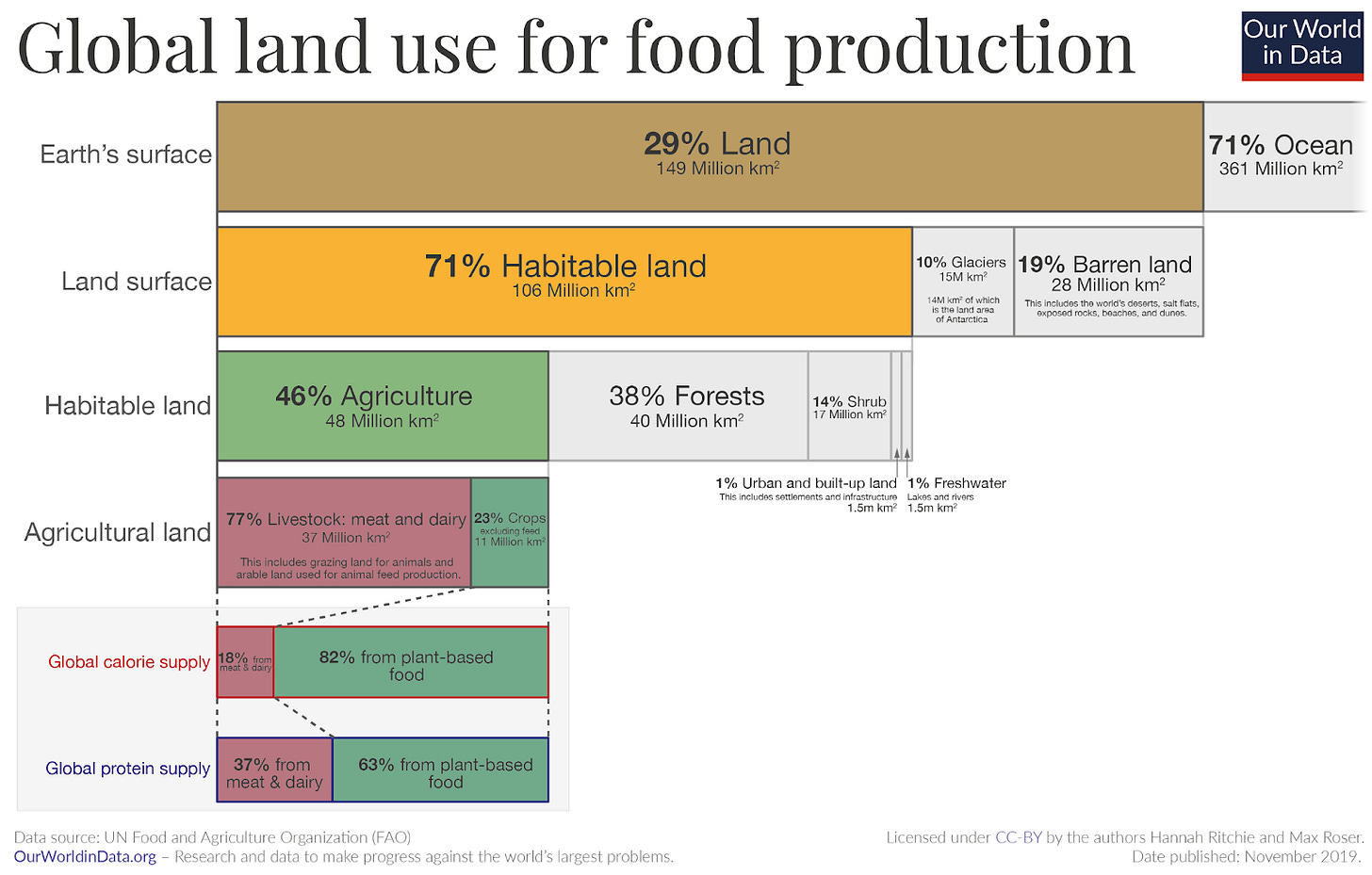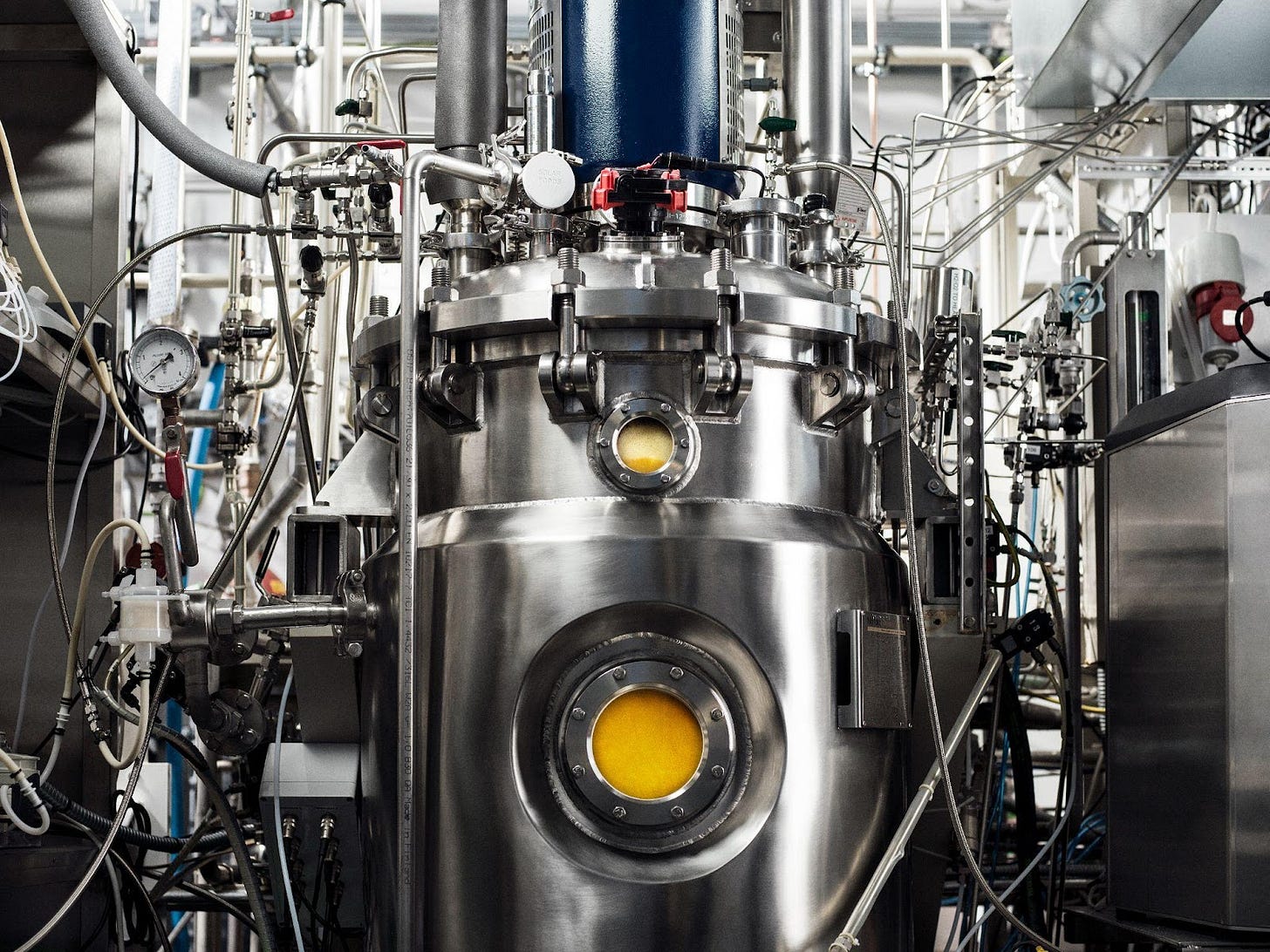Interview with Pasi Vainikka, Co-Founder and CEO of Solar Foods #53
Making food out of thin air
Hello Human,
I’m excited to introduce you to Pasi Vainikka, CEO & Co-Founder of Solar Foods! Solar Foods is tackling the environmental impacts of food production by making food out of thin air. Sounds like magic but is not!
Greetings from the Bay Area! Catch me up here until late April🌉
I’ve decided to run this newsletter on a monthly basis from now on. It feels this is sustainable publishing schedule for me at the moment💚
➡️Follow Survivaltech.club on Twitter and Linkedin💚
✨Updates
🌎Survivaltech.club & Fifty Years are organizing an event for builders, investors, and scientists in climate x deeptech on at Fifty Years HQ in San Francisco on Tuesday, April 18, as part of the wonderful SF Climate Week. Excited to see you there!
➡️Apply to join here!
🦠The first international conference for cellular agriculture takes place in Helsinki, Finland, on June 15-16.
➡️Find out more information and register here!
💚Wilbe, a UK-based venture studio for science startups, has started to offer pro-bono sessions for scientists to figure out their spinout strategy.
➡️Secure a free 30-min session on research spinout startegy here!
🍽️The dark side of food production
Food is a big part of human life. So, it is, unfortunately, also for global greenhouse gas (GHG) emissions. Food production accounts for nearly one-third of global GHG emissions!

Food production’s negative impact is not only limited to its GHG emissions. Our current way of producing food requires a lot of land resulting in deforestation and loss of natural habitat adn biodiversity.
Half of the Earth’s habitable land is used for growing crops for us or for livestock that we end up eating. It is shocking that livestock uses 77% of this land used for agriculture but supplies 37% of the global protein supply. Growing cows and other livestock for our food is highly inefficient while also causing animal suffering.

[Read more about the importance of forests and biodiversity in Survivaltech.club’s deep dive on forests.]
Today’s food production has also other severe environmental impacts, which Pasi will cover soon in the interview.
🦠Solar Foods’ solution
Solar Foods is a Finnish food technology company on a mission to revolutionize global food production. They make food out of thin air.
Solar Foods produces a natural protein, Solein®, from carbon dioxide and electricity using hydrogen fermentation. Their production method uses much less land and water than animal protein production and traditional agriculture.
Solar Foods is building its first commercial factory in Vantaa, Finland. The factory aims to produce 100 tons of the Solein® protein annually. As one meal typically contains 20 grams of protein, the factory can produce protein for 5 million meals.
🧠Wisdom from Pasi
What’s the founding story of Solar Foods?
I hold an M.Sc. in energy engineering and a Ph.D. in chemical engineering.
For 15 years, I worked as a scientist at VTT, the national research institute of Finland, and researched renewable energy systems, including bioenergy and waste-to-energy processes. After various co-incidences, I wrote a strategy for researching how a 100% renewable energy system could work.
Starting in 2015, I was involved in a joint project on direct air capture and synthetic fuels by VTT and LUT University. We built a pilot facility to produce fuels from the air. We realized it would take a long time before synthetic fuels make economic sense, as fossil fuels are so cheap. In contrast, the price of food (protein) is 10x higher than for fossil fuels. Thus, turning electricity into protein is likely to make economic sense earlier.
This realization was one factor that led my co-founders and I to found Solar Foods. Another factor I considered was the potential climate impact of our solution. I knew we could make a massive contribution to tackling the climate crisis and other environmental challenges if we were successful. Lastly, I felt deeply responsible for acting, as I am well-educated and know the state of the climate crisis. When my grandchildren ask what I did do to solve climate change, I better have a good answer.
In addition, Solar Foods represents my ideology that the most remarkable innovations happen at the intersection of scientific disciplines rather than within one field. Turning electricity into edible food requires knowledge of biology, fermentation, CO2 capture / direct air capture, hydrogen production, and renewable energy systems.
What environmental problems are there in food production? How does Solar Foods tackle these challenges?
Firstly, 30% of greenhouse gases originate from what we eat. But what’s less known is that agriculture and food production is responsible for 80% of other human-caused environmental impact. Agriculture and food production has three major environmental impacts:
Loss of natural habitat and biodiversity
Use of freshwater
Eutrophication
1. Loss of natural habitat and biodiversity
When practicing agriculture and cutting forests, we lose forests’ carbon stock and annual carbon sink, and the natural habitat of species. This loss of natural habitat contributes to the increasing loss of biodiversity.
2. Use of freshwater
Food production uses a lot of water resources. In water-scarce areas, food production tends to create social conflict. As water is expected to become even more scarce in the upcoming decades, we can also anticipate more conflicts related to food production.
3. Eutrophication
Agriculture results in eutrophication, the excessive plant and algal growth in bodies of water as fertilizers drain from fields to the water. The Baltic Sea is the most polluted sea on the planet due to eutrophication, intensified by the shallow body of water.
All these three problems originate from land use. Solar Foods bypasses these challenges by producing food in a steel tank (fermentor) with electricity. To give you a sense of scale, our minivan-sized fermentor produces the same amount of protein as 200 cows. In addition, our fermentor uses water efficiently and doesn’t leak fertilizers into the environment.
How does your technology work?
At the core of our technology are a fermenter and microbes. The fermenter is a steel tank similar to what is used to make wine or beer. Our microbes, which are fully natural and can be found in Finnish nature, live and grow inside the fermenter.

Our microbes eat hydrogen and carbon dioxide. They don’t eat sugar, as most microbes, like yeast cells, do. We feed the microbes with bubbles of hydrogen and carbon dioxide. You can think of the feeding system as a SodaStream tank! We produce hydrogen via electrolysis by splitting water into hydrogen and oxygen with electricity.
The microbes also need some minerals and nitrogen. While a plant typically takes in nutrients through its roots, we supply them for our microbes via a water solution. These are about 15% of a cell’s dry weight.
When the microbes have grown and multiplied enough, we dry the microbe cells. The result is a powdery substance that resembles nutritionally dried meat.
[Read more about microbes and how we already use them in our modern society in the Survivaltech.club’s deep dive on microbes]
What use cases does your Solein® protein have?
Our Solein® protein can be used in two different ways:
Protein ingredient
A fortifier for protein, iron, and vitamins
1. Protein substitute
We can make foods from the Solein® protein similar to soy and pea protein products, like meat alternatives, and alternative dairy products like beverages, yogurt, ice cream, soft-spread cheeses, and mayonnaise. It can also replace egg in some pastry applications including pasta and noodle. Check out this video, where our protein, instead of an egg is used to make ravioli.
Check out this video, where we make ice cream from our protein.
2. A fortifier for protein, iron, and vitamins
Our protein’s vitamin and amino acid content resemble dried beef. Solein® has iron, vitamin B12, pro-vitamin A, and all the essential amino acids required by human body, all of which a vegan diet typically lacks. Our protein can be added, for example, to breakfast granola or drinks to fortify the diet.

How have you financed Solar Foods and the factory construction?
Solar Foods has raised around €100M from diverse funding sources. We have funding from venture capital, debt financing, and public grants.
First, we raised equity funding. We raised a seed round led by Lifeline Ventures in 2018 and Series A a few years later. Raising this Series A was important not only moneywise but also as a signal for the later funders. It showed we were serious. Some leading cellular agriculture investors, such as CPT Capital and Agronomics, joined the Series A round.
We have also been able to raise debt financing and public grants. For example, we just received a €34M grant from Business Finland, a government-led agency, for building our protein-producing factories. In addition, we made a lease agreement for our factory facility with the pension fund of Finnish pharmacies.
You were a researcher in academia for 15 years. How did you become an entrepreneur? What would you say to scientists who are considering becoming deeptech entrepreneurs?
My entrepreneurial path started coincidentally. I was lucky to meet my co-founders, who knew of the existence, a kind of parallel reality, of startups and venture capitalists. None of that is taught in university lectures or books. They do not appear in the statistics of the national economy.
People with strong scientific backgrounds tend to be afraid of becoming entrepreneurs or even working for a private company. In reality, there are more commonalities between academia and entrepreneurship than most scientists realize. This applies especially to senior researcher roles. Senior researchers may do some research but most likely lead a team of scientists and are responsible for the research strategy and planning. As senior researchers are also responsible for research funding, they have even been practicing pitching, a key skill for deeptech entrepreneurs.
If a senior researcher decides to become a deeptech entrepreneur, only 5-10% of their daily life will change. As a deeptech entrepreneur, you have added benefits of choosing your team, focusing on one topic you are most passionate about, and having a magnitude of better funding.
I’d love to hear feedback and connect with fellow climate people! Contact me at pauliina@survivaltech.club, Twitter, or LinkedIn.
If you found this article useful, please share it with your network!🌍
➡️Follow Survivaltech.club on Twitter and Linkedin
Best, Pauliina








Really nice one 👏